
When it comes to website health, SEO audits are the first step toward ensuring that your site performs optimally in search engine results.
An SEO audit helps uncover any issues that might be hindering your site’s visibility, user experience, and performance. However, identifying technical errors and optimising your site goes beyond simply targeting keywords and meta tags. From favicon omissions to broken internal links, there are a variety of technical issues that could be holding back your site’s potential.
In this guide, we’ll walk you through common SEO issues that may be impacting your site’s ranking, and provide actionable insights on how to fix them. By resolving these errors, you’ll not only enhance your website’s SEO but also improve the overall user experience and strengthen your brand’s credibility online.
1. Unoptimised Crawl Budget
Search engines allocate a crawl budget to each website, determining how many pages they will crawl. If your site has a lot of low-value pages, it may waste your crawl budget, preventing search engines from focusing on the important, high-quality pages you want to rank. Optimising your crawl budget ensures search engines index the most relevant pages, boosting your visibility.
2. PageSpeed & Core Web Vitals Issues
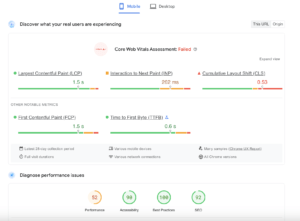
Page speed and Core Web Vitals are critical for user experience. A slow website not only frustrates visitors but also negatively impacts search rankings. Google uses Core Web Vitals to evaluate a site’s user experience, and poor performance can lead to lower rankings, reduced traffic, and fewer conversions.
3. Duplicate Pages
Duplicate content confuses search engines and can dilute your rankings. Google may index the wrong pages or fail to rank the pages you’re trying to promote. This can result in a loss of organic visibility. It’s essential to identify and resolve duplicate content issues to ensure that search engines index the right pages.
4. Thin Content Pages
Pages with little to no valuable content can hurt your SEO efforts. Search engines view these as low-quality pages, and they can be a waste of crawl budget. These pages often don’t provide value to users, which can lead to poor rankings and a higher bounce rate. Make sure your content is substantial, relevant, and useful to your audience.
5. Broken Pages

404 errors disrupt user experience and lead search engine crawlers to dead ends. Broken pages waste your crawl budget and create barriers for both search engines and visitors. It’s crucial to regularly check for broken links and set up 301 redirects to prevent lost traffic and improve the site’s crawlability.
6. Content Discovery & Promotion Issues
Orphan pages (pages not linked from any other page) are difficult for search engines to discover and may never rank. Additionally, poorly promoted content may not reach its full potential, leading to missed opportunities for organic traffic. Ensure all pages are well-linked within your site structure and promoted effectively.
7. Reduced Image Optimisation
Images play a vital role in user experience and SEO. Missing alt text and poorly optimised image file sizes can affect accessibility and page load times. Both of these factors can harm your search rankings and frustrate users. Proper image optimisation improves accessibility, load speeds, and SEO.
8. Site’s Security Issues
A lack of security on your website can lead to site vulnerabilities, making it difficult for search engines to crawl your pages effectively. Security issues, including slowdowns caused by hackers, can result in crawl interruptions and lost traffic. A secure site improves search engine trust and enhances the user experience.
9. Internal URLs that Redirect (3XX) to Another URL
Internal redirects add unnecessary steps in the crawl process, slowing down page load times and affecting SEO performance. Each redirect means extra processing time for search engines and users. Reduce the number of redirects to enhance the crawlability and performance of your site.
10. Two Google Tag Manager Codes
Running two instances of Google Tag Manager can cause tracking issues, as well as negatively impact page load speeds. This can lead to inaccurate data in Google Analytics and a slower site, both of which can harm SEO performance. Consolidate your tracking codes to avoid errors and improve page speed.
11. Missing Relevant Schema
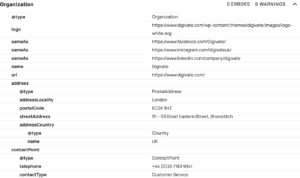
Schema markup helps search engines understand your content and display rich snippets in search results. Without it, you may miss out on an opportunity to improve your visibility and click-through rates. Adding relevant schema can boost your search rankings and increase traffic.
12. Reduced Visibility on Google Business Profile
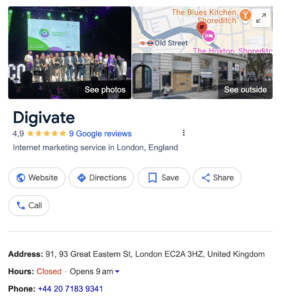
A well-optimised Google Business Profile enhances local SEO and provides valuable information to users searching for your business. Failing to optimise your profile can hurt local rankings, making it harder for potential customers to find your business. Set up and optimise your profile to improve your visibility and trustworthiness.
13. Meta Titles Issues
Meta titles are essential for SEO and user experience. If they are missing, duplicated, or not optimised with the correct keywords, search engines may struggle to understand the page’s relevance. Unique and keyword-optimised meta titles improve click-through rates and rankings.
14. Meta Descriptions Issues

Although meta descriptions don’t directly impact rankings, they are important for user engagement. A well-crafted meta description can increase click-through rates from search results. Missing or poorly written descriptions are a missed opportunity for optimisation and improving user experience.
Meta descriptions should be concise—between 160-165 characters for desktop and 115-120 characters for mobile. Avoid excessively long descriptions, as they may be truncated by search engines.
15. Reduced Trust & Credibility Signals

Social proof, such as customer reviews, boosts trust and credibility. Without clear trust signals on your site, potential customers may hesitate to engage. Adding testimonials and reviews to your homepage and product pages can improve conversions and signal trustworthiness to both users and search engines.
16. Site Contain JavaScript Errors
JavaScript errors can lead to rendering issues, making it difficult for search engines to crawl and index content properly. This can negatively impact your rankings, so it’s important to ensure that all JavaScript on your site is error-free to prevent crawling issues.
17. Canonical Links are Missing Across the Website
Canonical links prevent duplicate content issues by telling Google which version of a page to index. Without canonical links, Google might index duplicate pages, confusing search engines and impacting rankings. Adding self-referencing canonical links is a good practice to maintain content consistency.
18. Broken External Links
External links that lead to 404 pages create a poor user experience and can harm your site’s SEO. Broken external links signal to search engines that your site is poorly maintained, which can hurt rankings. Regularly check for broken links and replace them to preserve user trust and SEO value.
19. Meta Keywords are Being Used
The meta keywords tag is obsolete and no longer used by Google for ranking purposes. If you’re still using it, you’re wasting valuable optimisation opportunities. Remove outdated meta tags and focus on strategies that actually impact rankings, such as high-quality content and backlinks.
20. Related Posts Feature is Missing on Blog

Adding a related posts feature can boost content engagement, keep visitors on your site longer, and pass link equity to other pages. This helps increase the overall authority of your site and can improve SEO by providing internal linking opportunities that help search engines understand your content better.
21. Orphan & Semi-Orphan Pages
Orphan pages are difficult to discover because they are not linked to from other pages on your site. These pages miss out on potential SEO value and organic traffic. Ensure that all pages are properly linked and promoted to enhance their discoverability and rankings.
22. Inconsistent URL Structure For Service Pages
A consistent URL structure helps search engines understand your website’s hierarchy and content relationships. Inconsistent or unclear URL structures can confuse search engines and make it difficult to rank pages effectively. Keep your URL structure logical and standardised across your website.
23. XML Sitemap Issues
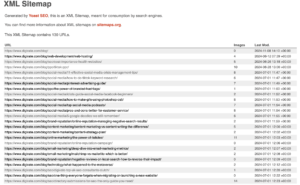
XML sitemaps are essential for helping search engines crawl and index your site. If your sitemap is missing pages or contains unnecessary URLs, search engines may miss important content. Make sure your sitemap is up-to-date and only includes pages you want indexed.
24. Low-Quality Signals in Backlink Profile
Backlinks are a key ranking factor, but low-quality backlinks can harm your site’s authority and trust. A large number of backlinks from low-quality sites can be a red flag for Google. Focus on earning high-quality backlinks from reputable sources to improve your SEO.
25. Inaccurate Data in Google Analytics
Inaccurate data in Google Analytics can mislead your marketing strategies and SEO efforts. Ensure that your tracking is properly set up and accurate to get reliable insights into your website’s performance and user behaviour.
26. H1-Tag Issues
The H1 tag helps search engines and users understand what a page is about. If it’s missing or improperly used, it could hurt your SEO. Ensure each page has a clear, optimised H1 tag to improve visibility and user experience.
Having multiple pages with the same H1 tag can lead to keyword cannibalisation and duplicate content issues. Ensure each page uses a unique H1 to avoid SEO problems.
27. Redirects in the Navigation
Redirects in the navigation can slow down site performance and waste crawl budget. Ensure that all links in the navigation bar point directly to the correct pages to improve usability and SEO performance.
28. Unoptimised 404 Page
A poor 404 page can create a frustrating experience for users. Optimising your 404 page with helpful links to other parts of your site can improve user engagement and keep visitors on your site longer, reducing bounce rates.
29. Images with Missing Alt-Text
Alt text is crucial for accessibility and SEO. Without alt text, search engines cannot properly understand the context of your images, and visually impaired users may struggle to navigate your site. Always add descriptive alt text to your images to improve SEO and accessibility.
30. Favicon is Missing
Favicons are the small icons that appear in browser tabs. They are essential for branding and can now impact mobile search results, where Google has started using them. Make sure to add a favicon for better recognition.
31. Breadcrumbs are Missing

Breadcrumbs are a navigation aid that shows users where they are on the site and how to get back to previous sections. They also help Google understand the site’s structure, improving both user experience and SEO.
32. 301 Redirect Chains
Having multiple redirects can slow down page load speed and lose SEO value. While Googlebot can follow redirect chains, excessive redirects are inefficient. Consolidate them to ensure your site doesn’t lose SEO authority.
33. Google Reviews Widget
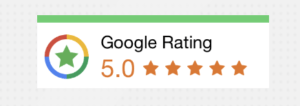
Displaying Google Reviews via a widget can increase trustworthiness. Show Google review stars from your Google My Business page to enhance social proof and increase conversions.
34. Spelling Errors
Spelling mistakes negatively affect user trust, lead to higher bounce rates, and reduce conversions. Regularly check your content for errors and maintain professionalism.
35. Google Search Console’s International Targeting is Not Set Up
International targeting helps Google understand which country to prioritise in search results. If your website serves multiple countries, set up international targeting to ensure you’re reaching the right audience.
36. Thank You Pages Are Indexable
Thank You pages often have little content and serve only to acknowledge actions (like purchases). These pages should not be indexed as they provide no additional value and can harm SEO performance.
37. Organic Traffic Red Flags

Identifying traffic patterns and issues with organic traffic is key to improving rankings. If you notice drops or irregularities, it’s crucial to understand the root cause before proceeding with corrective actions.
38. Call to Actions Are Too Close to Each Other
If CTAs are positioned too closely, users may become frustrated trying to click the correct one. Ensure there’s enough space between CTAs for an intuitive user experience.
39. <head> Contains a <noscript> Tag with an Image
Including an <img> tag in the <head> breaks the structure and may cause important tags (like meta robots) to be missed by search engines. Avoid this issue to ensure proper indexing.
40. Attachment URLs Are Visible & Indexable
Attachment URLs can result in duplicate or low-quality content. Redirect them to the media item itself or disable their indexing to avoid unnecessary clutter in search engine results.
41. Low Numbers in Backlink Profile
A strong backlink profile is a critical ranking factor. If your site has a low number of backlinks, consider outreach and content strategies to improve the profile and boost your SEO efforts.
42. Potential Negative SEO Attack Via Backlink Profile
Check for unnatural backlinks which may indicate a negative SEO attack. While Google may ignore these, it’s best to remove toxic links to maintain your site’s credibility.
43. Lack of Content on the Website
Content is essential for SEO. Websites with little to no content struggle to rank for competitive keywords. Consider adding a blog and valuable content to improve keyword targeting and attract backlinks.
44. Canonical URLs With No Incoming Internal Links
Canonical URLs should be part of your site’s architecture. If they lack internal links, they may not perform well in search rankings, as Google needs a strong internal linking structure to recognise their importance.
45. Lack of SEO Visibility on Key Pages
Make sure that important pages like service pages are SEO-optimised and rank for relevant, high-conversion keywords. A well-structured site targeting commercial intent keywords is vital for generating leads.
46. Homepage Is Not SEO-Optimised
The homepage is usually the highest-authority page on a website. Ensure it is SEO-optimised with clear keyword targeting, a relevant description of what your business does, and a smooth user experience.
47. Duplicate Content
Duplicate content can confuse search engines and may lead to penalties. Avoid having identical or nearly identical content across multiple URLs to prevent cannibalisation and ranking issues.
48. Homepage Receives Both Follow & Nofollow Internal Links
Using nofollow links can prevent link equity from passing, but mixing follow and nofollow links can lead to inconsistency in how your homepage is treated by search engines. Ensure you’re linking correctly to maintain SEO performance.
49. Low Number of Keyword Rankings on First Page
If your website isn’t ranking for competitive keywords, it might be time to revisit your SEO strategy. Optimising your metadata, using relevant keywords, and enhancing your content can help you rank better.
50. HTTPS URL Links to an HTTP URL
Serving pages over HTTP instead of HTTPS can damage user trust and may impact SEO. Always ensure internal links are HTTPS to maintain security and improve the site’s overall SEO.
51. HTTP URLs Are “Temporarily” Redirected to HTTPS
Ensure that you’re using 301 redirects (permanent) instead of 302 redirects (temporary) when moving from HTTP to HTTPS. This ensures proper SEO value transfer.
52. XML Sitemap is Missing
An XML sitemap helps search engines index your pages more efficiently. Make sure your site has a sitemap that includes all important URLs for indexing purposes.
53. Mobile-Friendly Issues
With Google’s mobile-first indexing, it’s essential that your website is optimised for mobile users. Test your site for mobile-friendliness and make improvements to enhance the user experience.
54. Lack of Hreflang Tag Usage
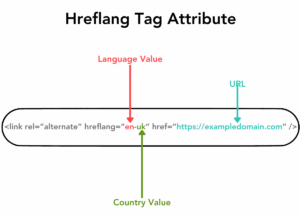
For international websites, hreflang tags are crucial in helping Google serve the correct version of a page based on language and region. Implement hreflang tags to avoid issues with duplicate content and improve SEO visibility.
55. URLs Contain Uppercase Characters

URLs should ideally be lowercase to avoid duplicate content issues and improve site performance. Use lowercase for all URLs to ensure consistency and avoid crawl errors.
56. Logo is Not Linked to the Homepage
Ensure that the logo on your website is linked to the homepage. This is a standard UX practice and helps users navigate your site more easily.
57. Duplicate Meta Data
If multiple pages share the same title or meta description, search engines may have trouble distinguishing between them. Ensure each page has unique metadata to improve indexing.
58. Images Too Heavy
Large image files can slow down page loading times. Optimise images for web use to enhance page speed and user experience.
59. URLs Using Underscores

Google treats underscores as word joiners, which can lead to SEO issues. Use hyphens instead of underscores to separate words in URLs.
60. Server Located Outside Target Country
If your server is located far from your target audience, it may slow down the site. Consider using a CDN or relocating your server for faster load times and better user experience.
61. Pages Missing Analytics Tracking
Without analytics tracking, you cannot monitor or improve your website’s performance. Implement tracking on all important pages to measure key metrics like traffic, conversions, and user engagement.
62. Pages with Lorem Ipsum Content
Pages with placeholder content like Lorem Ipsum offer no value to users and can negatively impact SEO. Replace this content with meaningful, relevant information as soon as possible.
63. Indexable Pages Not Being Indexed
If important pages aren’t indexed, they can’t rank in search results. Ensure your valuable pages are being indexed to maximise your SEO potential.
64. Lack of Keyword-Rich Anchor Text on Backlinks

Backlinks with relevant, keyword-rich anchor text can improve rankings. Aim to gain backlinks with keywords that match your target pages, but ensure this is done naturally to avoid penalties.
65. Internal Links Pointing to Broken Pages
Internal links to broken 404 pages disrupt the user experience and hurt SEO. Regularly audit your links to remove or fix any broken URLs.
Conclusion
A successful SEO strategy is built on a solid foundation of technical optimisation. Regular SEO audits and quick fixes for common issues like missing favicons, broken links, and duplicated meta tags are essential to maintaining your website’s health and improving its performance. Addressing these issues may seem overwhelming, but breaking them down into manageable tasks will make the process more efficient and beneficial in the long run.
By keeping your website optimised and error-free, you’ll set your business up for sustained growth, better user engagement, and improved search engine rankings. Start tackling these common technical issues today and watch your website’s visibility and user experience improve. Unsure how to fix these issues? Ask our SEO experts.



